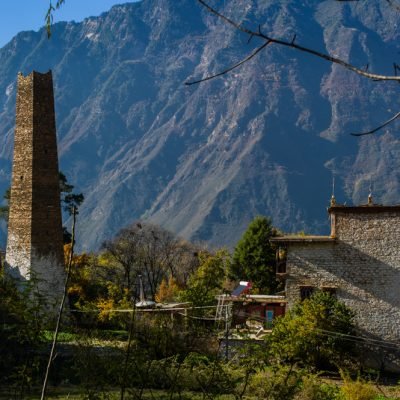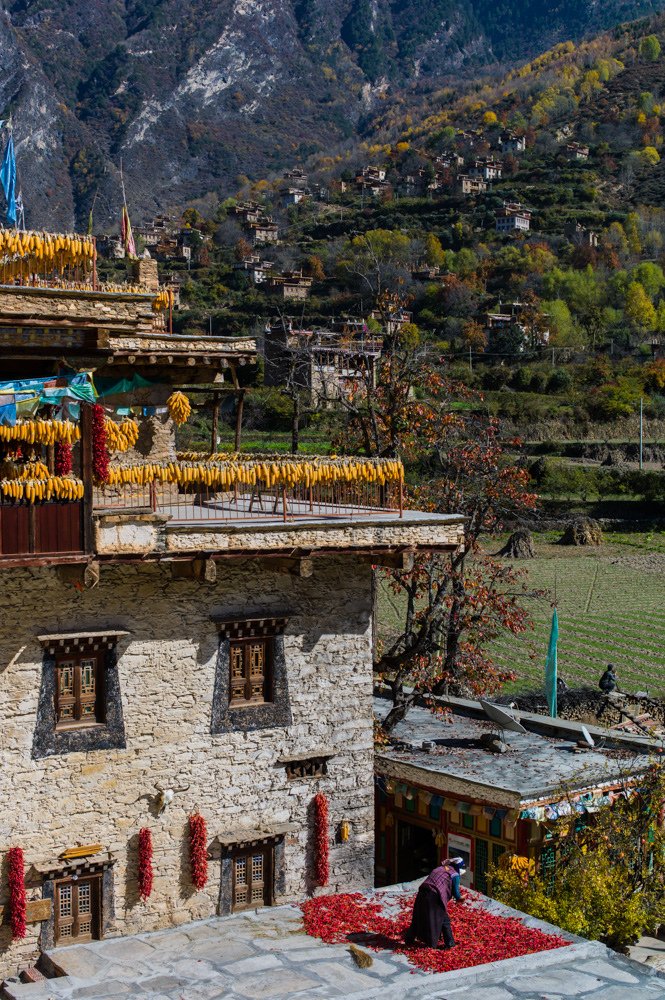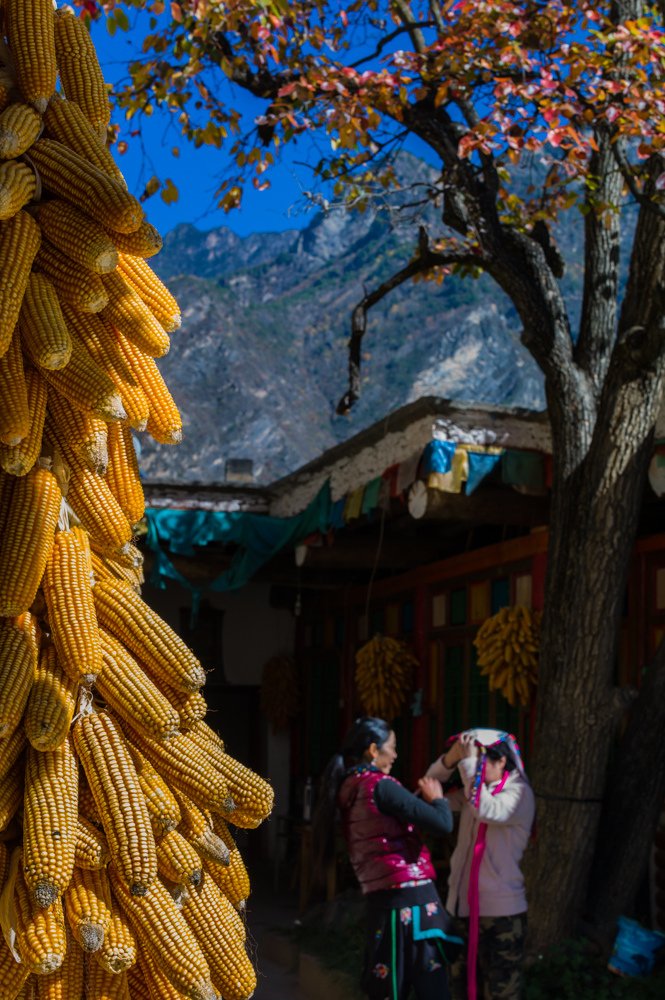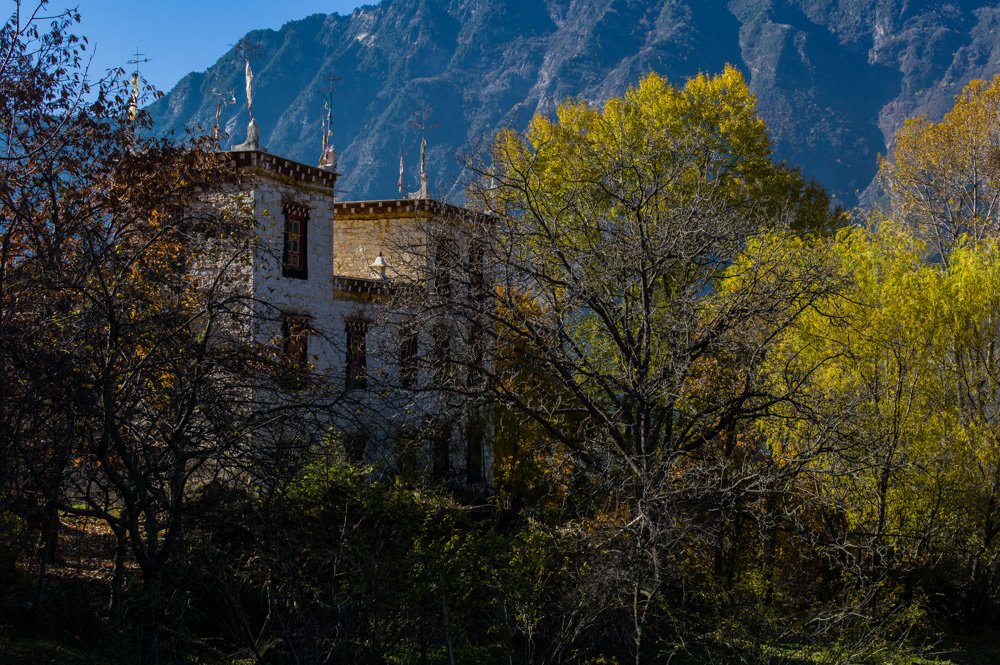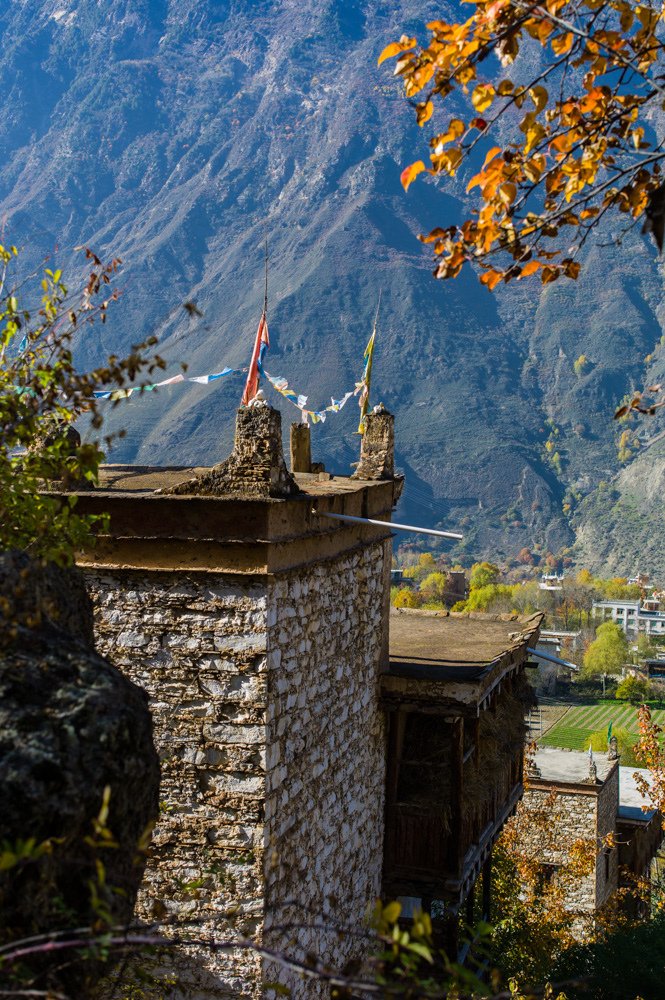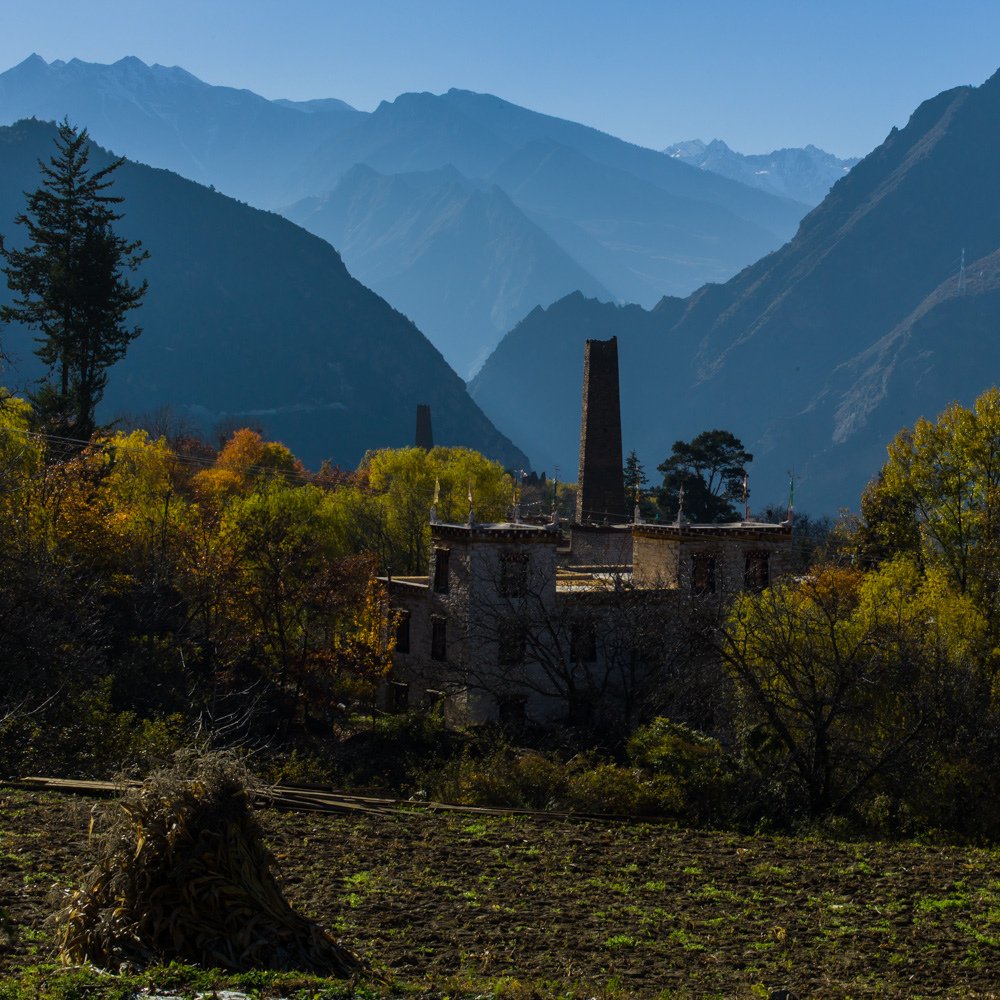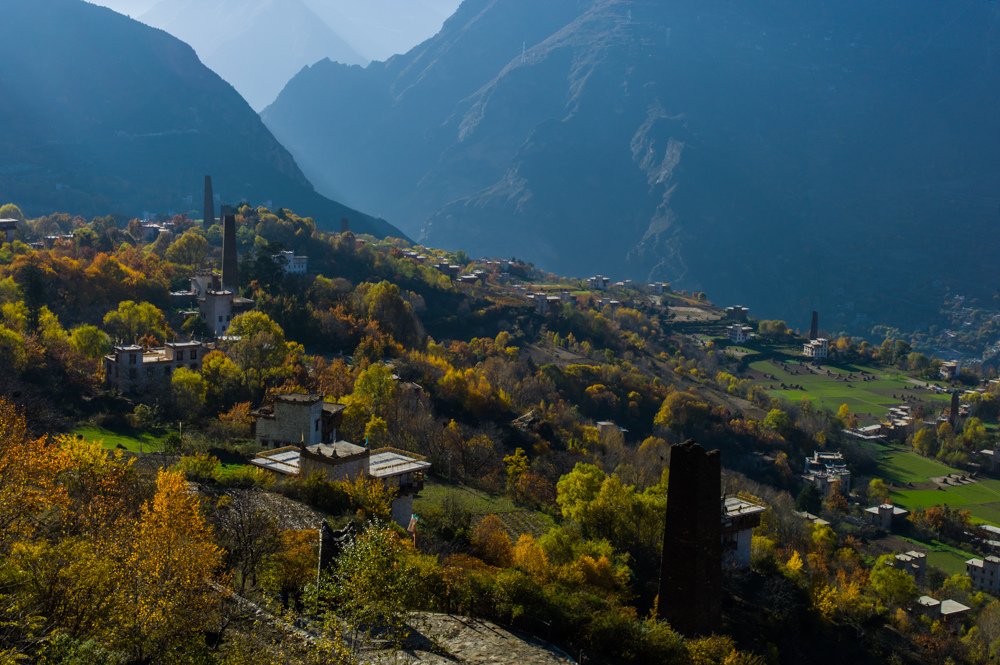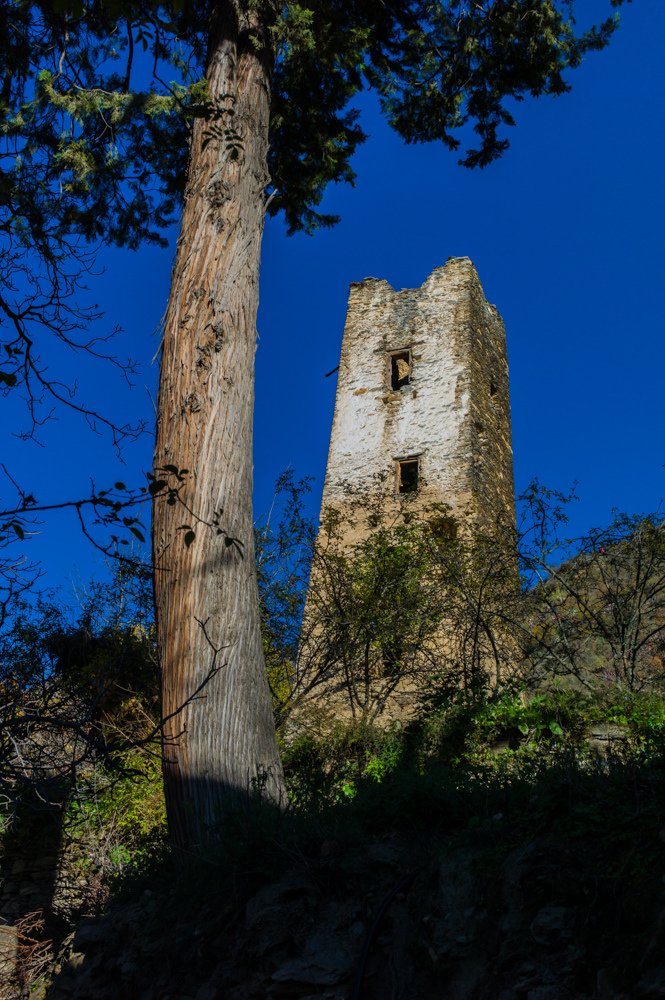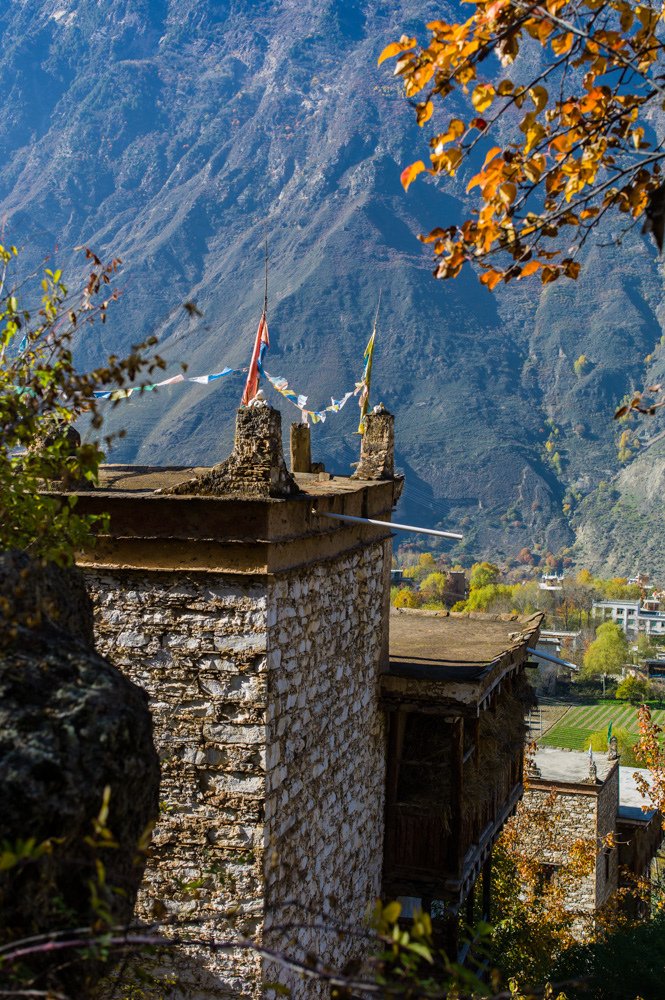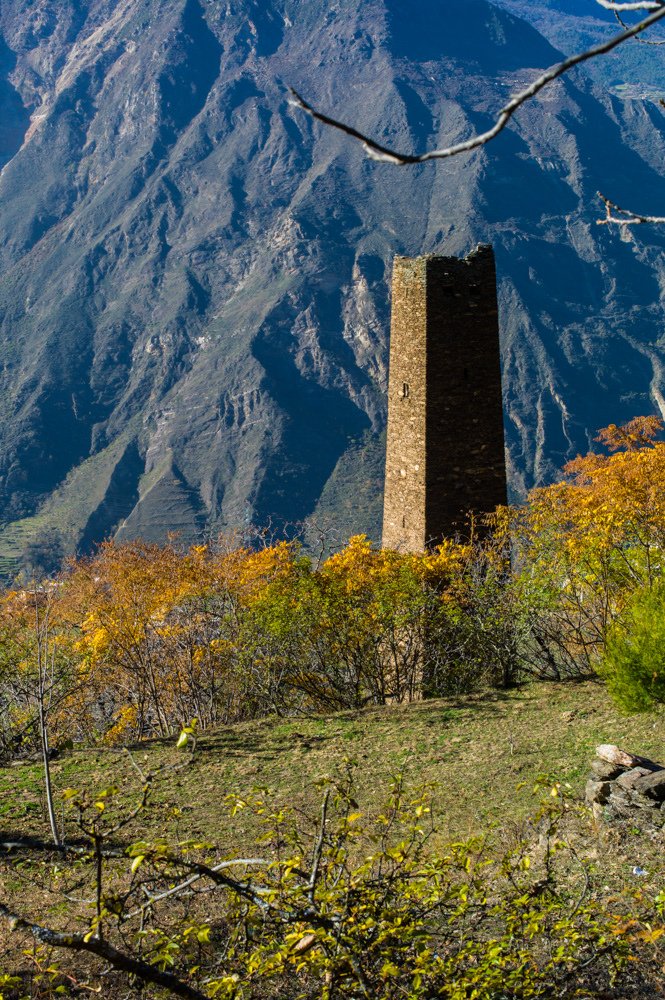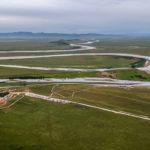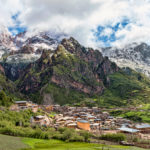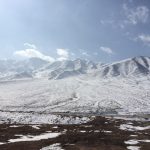Danba used to be an important stop on the Tea and Horse Caravan that traded Chinese tea for Tibetan salt and horses. One look at the surrounding terrain and it is not hard to imagine that it must have been a grueling journey to get here with 200 pound backpacks full of tea leaves over the treacherous mountain passes. Even today, to reach Danba you have to travel through almost 100 km of nearly continuous interlinked tunnels that penetrate through the steep cliffs that protect the area. As you pass through these concrete tunnels, remember the coulies who had no shoes on their feet and had to walk the very craggy mountains that you now are driving under.
Danba county varies greatly in altitude, from peaks that are as high as 5,820 meters to river valleys as low as 1,700 meters. The Big Jinchuan and Small Jinchuan Rivers meet here, marking the beginning of the Dadu River.
The county’s landscape varies a great deal and can change quickly in vertical relief, from the high-altitude snow-capped mountains to the low altitude grasslands and valleys.
Danba is the hometown of Jiarong Tibetans, a small subgroup of Tibetans who are known for residing in the lowest part of the entire Tibetan Plateau. Because of the relatively low altitude (at 1,893 meters/ 6,211 feet) this is a very isolated and fertile valley. While many other Tibetans often struggle to eek out a living by herding yaks on the unforgiving, windswept grasslands and alpine tundra at 4,000 meters, the Jiarong Tibetans have the benefit of some of the richest (and warmest) cropland available in all of western China. It is not uncommon to see piles of corn or basketfuls of Sichuan peppercorn adorning the large 4 story stone houses that Danba is so famous for.
Usually distributed along the southern mountain slopes and facing the sun for optimal solar radiation, the whitewashed homes consist of three or four stories, all made of local stone. Each of these large castle-like homes houses an extended family and is surprising in its elaborate architecture. The exterior walls of the top floors are usually painted yellow, black, or dark red and are decorated with the patterns of the heavens and other religious designs. The ground floor is usually used for feeding and bedding livestock, while the upper floors contain the hearth and heart of the home: the kitchen, storeroom, living room, and scripture hall. On the 4 corners of the roof there are 4 white turrets which are used to offer sacrifices to the local deities thought to govern the nearby hills, trees, rivers and fields. Prayer flags hanging around the houses ripple in the wind, adding more charm and color to the already ripe green and yellow fields of the region.
Outside the handcrafted homes, orchards of apples, pears, peaches and pomegranates adorn the outer pastures of the valley. In the hillside fields villagers plant crops such as highland barley, rapeseed, corn, and potatoes and these crops enjoy a much longer growing season that almost any other part of the Tibetan Plateau.
Claimed as the “most beautiful ethnic village in China” by Chinese National Geographic The Danba Valley is actually divided into several small villages. While there are a few luxury hotels in the area, most tourists find themselves cozying up in the stone castle-homes of the friendly Jiarong Tibetans for a delightful homestay experience, sometimes even complete with Yak Butter Tea and an ethnic Jiarong dance. The principal villages that you are likely to encounter as a tourist include: Zhonglu 中路, Jiaju 甲居, and Sopo 梭坡. There are entrance fees in each of these places although many times if you get there after 6:00pm you will find the ticket collectors have gone home for the night. Of the three villages, Sopo 梭坡 has the greatest number of watchtowers although Jiaju and Zhonglu certainly see the greatest numbers of visitors.
Jiaju Tibetan Village and Zhonglu Tibetan Village
Lying in the north of Danba, Jiaju Tibetan Village in Niexia town stands out from all the other villages. It is about 5 miles (8 kilometers) from the county town and occupies an area of 1,200 acres (486 hectares), with more than 140 families residing here. Generally speaking, a house is owned and occupied by one just one extended family. Some houses have a more convenient location right in the center of the village while others are farther away from the village gossip and activity. Stepping into the Tibetan homes, you will find yourself in a world of wonder. The walls, beds, and cabinets are all adorned with delightful patterns such as lotuses, trees, rivers, mountains, and lamas in various bright colors,.
You can spend the whole day wandering around the village and exploring the marvelous interior of local Tibetan homes with beautiful stone and wood work. The entrance fee was 50 RMB as of August 2016, however if you come after 6pm, nobody will be there to charge. There are plenty of houses to sleep in across the village as most villagers are accustomed to housing visitors and showing them local hospitality. Accommodation prices vary from 40 – 100 RMB per night per person, and homestays may include a freshly cooked local dinner.
Aside from Jiaju Tibetan Village, the Tibetan houses in Zhonglu Town and Badi Town are very famous too. The narrow winding road from Jiaju brings you further into the mountains to Zhonglu, less visited than Jiaju, but equally beautiful. The Zhonglu village is surrounded by forest, so if you are looking for a relaxed nature walk you may find this interesting.
Both Jiaju and Zhonglu are are authentic and traditional Tibetan villages where you can still find locals picking Sichuan peppercorns in their hand woven baskets or up in a tree picking the fruit from their pear trees. Jiaju Village is more popular for tourists because it has more houses, while Zhonglu is more secluded and fewer travelers go there.
Suopo Stone Watchtowers (Diaolou)
Suopo has in total 84 watchtowers, the largest concentration in the area, and as such is the best place to see Danba watchtowers. One can view the plethora of towers from across the road or can walk through the village for a closer look. The history of these stone towers dates back to around 2000 years ago. Local Jiarong Tibetans claim that these towers were constructed mainly as a result of battles their ancestors had in defending their local lands and wealth. Although apparently the towers have also been used as spiritual high places to exorcise unwanted demons and spirits from harassing the Danba Valley.
Dangling
Located 68 km northwest to the town of Danba, Dangling is a gallery of natural alpine lakes, forest, hot springs, grassland and a perfect hiking destination in Sichuan. Thankfully, it is still a relatively undeveloped and untouched place in Tibetan area of northwest Sichuan. Over 24 mountains here hover over 5,000 meters and many of these still remain unclimbed and unexplored even in 2018.
Whether you go for the nature, the culture, or the architecture, a trip to Danba is surely going to be a trip of a life time and is certainly worth 2-3 days of your travel itinerary.
